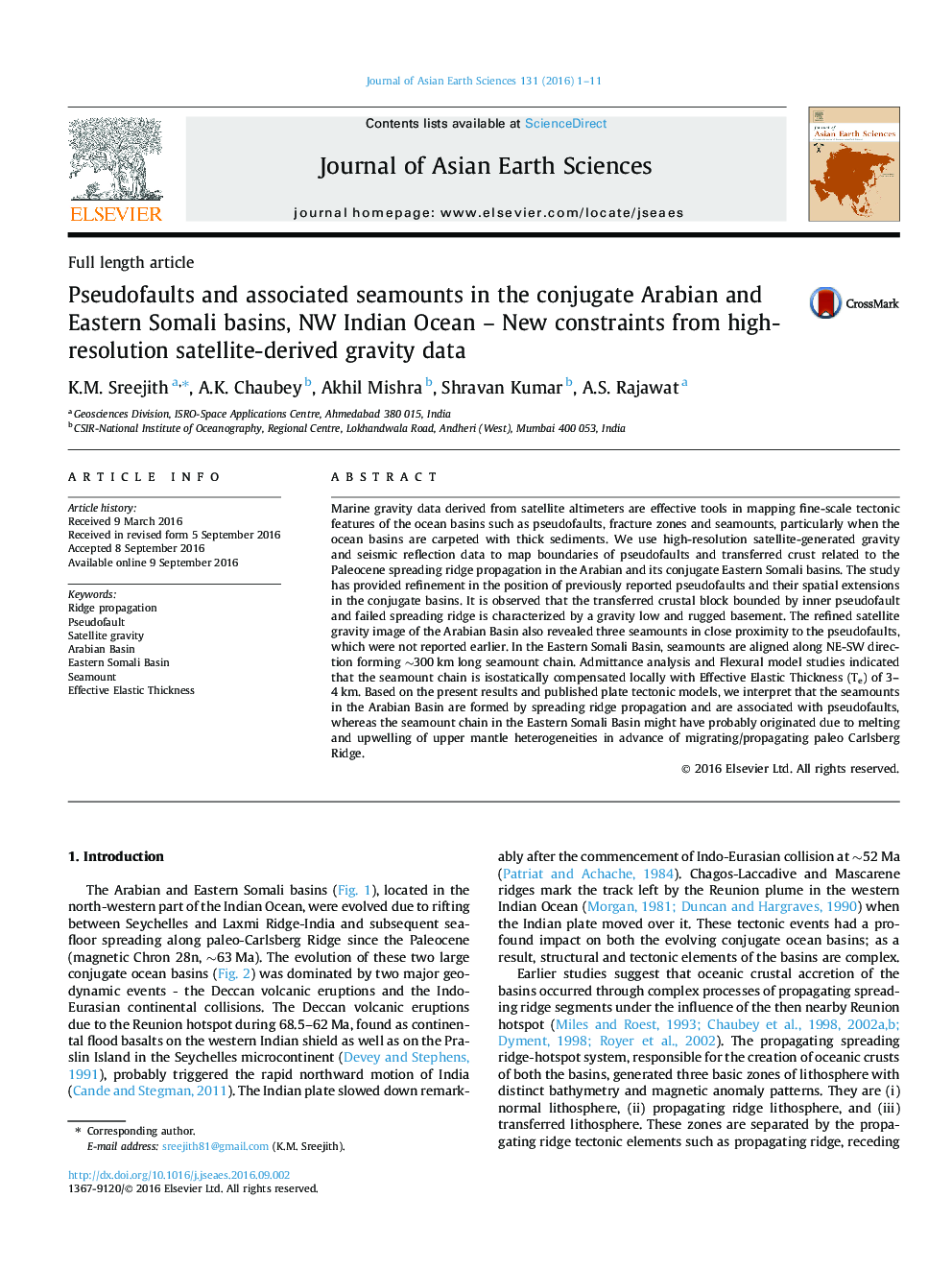| کد مقاله | کد نشریه | سال انتشار | مقاله انگلیسی | نسخه تمام متن |
|---|---|---|---|---|
| 4729929 | 1640340 | 2016 | 11 صفحه PDF | دانلود رایگان |
• Satellite gravity reveals pseudofaults in Arabian and Eastern Somali conjugate basins.
• Three uncharted seamounts close to the pseudofaults in Arabian basin and are reported.
• Estimated Effective Elastic Thickness for the Seamount chain of Eastern Somali Basin.
• Seamounts in the Arabian Basin are formed by spreading ridge propagation.
• Seamount chain in eastern Somali basin could be related to migration of paleo Carlsberg Ridge.
Marine gravity data derived from satellite altimeters are effective tools in mapping fine-scale tectonic features of the ocean basins such as pseudofaults, fracture zones and seamounts, particularly when the ocean basins are carpeted with thick sediments. We use high-resolution satellite-generated gravity and seismic reflection data to map boundaries of pseudofaults and transferred crust related to the Paleocene spreading ridge propagation in the Arabian and its conjugate Eastern Somali basins. The study has provided refinement in the position of previously reported pseudofaults and their spatial extensions in the conjugate basins. It is observed that the transferred crustal block bounded by inner pseudofault and failed spreading ridge is characterized by a gravity low and rugged basement. The refined satellite gravity image of the Arabian Basin also revealed three seamounts in close proximity to the pseudofaults, which were not reported earlier. In the Eastern Somali Basin, seamounts are aligned along NE-SW direction forming ∼300 km long seamount chain. Admittance analysis and Flexural model studies indicated that the seamount chain is isostatically compensated locally with Effective Elastic Thickness (Te) of 3–4 km. Based on the present results and published plate tectonic models, we interpret that the seamounts in the Arabian Basin are formed by spreading ridge propagation and are associated with pseudofaults, whereas the seamount chain in the Eastern Somali Basin might have probably originated due to melting and upwelling of upper mantle heterogeneities in advance of migrating/propagating paleo Carlsberg Ridge.
Figure optionsDownload as PowerPoint slide
Journal: Journal of Asian Earth Sciences - Volume 131, 1 December 2016, Pages 1–11
